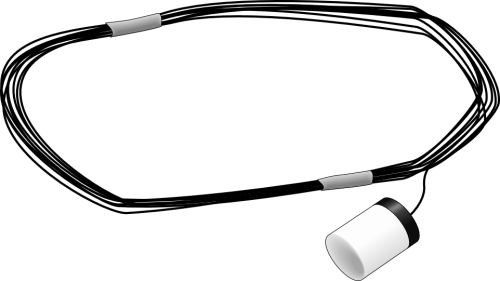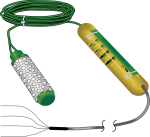This product is not available for new orders.

| Services Available | |
|---|---|
| Repair | No |
| Calibration | No |
| Free Support | No |
Overview
The 223, manufactured by Delmhorst, is a cylindrical gypsum block that estimates soil water potential from -10 to -1000 kPa. It connects to a data logger via an AM16/32-series multiplexer.
Read MoreBenefits and Features
- Compatible with AM16/32-series multiplexers, allowing measurement of multiple sensors
- Multiplexer connection prevents electrolysis from prematurely destroying the probe
- Measures a wide range of matric potential
- Buffers salts in soil
- No maintenance required
- Compatible with most Campbell Scientific data loggers
The "-L" on a product model indicates that the cable length is specified at the time of order.
Images

Detailed Description
The 223 determines soil water potential by measuring electrical resistance. When the 223 is wet, electrical resistance is low. As the 223 dries, resistance increases.
The 223 cylindrical block is composed of gypsum cast around two concentric electrodes, which confine current flow to the interior of the block, greatly reducing potential ground loops. Gypsum located between the outer electrode and the soil creates a buffer against salts that may affect the electrical conductivity.
The 223 connects to a data logger via an AM16/32-series multiplexer. Because the multiplexer contacts close only during measurement, electrical currents leading to premature degradation of the 223 are eliminated.
Campbell Scientific recommends removing the 223 during winter.
Specifications
| Material | Gypsum |
| Measurement Range | -10 to -1000 kPa |
| Calibration | Individual calibrations are required for accurate measurements. Refer to the sensor manual for more information. |
| Operating Temperature | Soil temperatures above freezing |
| Life Expectancy | Two freeze-thaw cycles |
| Electrode Description | Concentric cylinders |
| Center Electrode | Excitation |
| Outer Electrode | Ground |
| Cylinder Diameter | ~2.25 cm (0.88 in.) |
| Cylinder Length | ~2.86 cm (1.25 in.) |
| Weight | 180 g (0.4 lb) |
Compatibility
Note: The following shows notable compatibility information. It is not a comprehensive list of all compatible or incompatible products.
Data Loggers
| Product | Compatible | Note |
|---|---|---|
| CR1000 (retired) | ||
| CR3000 (retired) | ||
| CR6 | ||
| CR800 (retired) | ||
| CR850 (retired) |
Additional Compatibility Information
Multiplexers
Multiplexers that can be used with the 223 include the AM16/32B, AM16/32A (retired), AM16/32 (retired), and AM416 (retired).
Data Logger Considerations
Two single-ended channels and one excitation channel per probe are required; the channels are shared by several probes when routed through an AM16/32-series multiplexer.
Documents
Privacy Policy Update
We've updated our privacy policy. Learn More
Cookie Consent
Update your cookie preferences. Update Cookie Preferences

